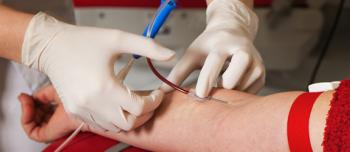The Centers for Disease Control and Prevention (CDC) has launched the first national surveillance system to monitor adverse events in patients who receive blood transfusions. The agency is encouraging healthcare facilities across the country to enroll in the new system, which was designed to improve patient safety. The system, called the Hemovigilance Module, is part of CDC’s National Healthcare Safety Network (NHSN).
NHSN is an internet-based network that allows healthcare-associated infection data to be tracked and analyzed to allow CDC and healthcare facilities to maximize prevention efforts. According to CDC, employing a coordinated national network will help the agency to enhance prevention of adverse transfusion events such as reactions to blood products, medical errors and process problems.
“This is an important advance in monitoring the safety of transfusions for patients nationwide,” said Matthew J. Kuehnert, MD, director of the CDC’s Office of Blood, Organ, and Other Tissue Safety. “This system will enable healthcare facilities to better recognize blood transfusion-related adverse events so that they can improve the care of patients who have transfusions.”
The Hemovigilance Module was developed by the CDC in collaboration with AABB, formerly known as the American Association of Blood Banks. AABB is an international association representing individuals and institutions involved in activities related to transfusion and cellular therapies, including transplantation medicine. AABB member facilities are responsible for collecting virtually all of the nation’s blood supply and transfusing more than 80% of all blood and blood components used in the U.S.
“Healthcare facilities that join the Hemovigilance Module will now have a yardstick by which to measure their current safety initiatives and their future efforts,” said Dan Pollock, MD, chief of the branch that leads CDC’s NHSN. “Through this system, healthcare facilities can also see how their performance stacks up to similar facilities nationwide, with a goal of designing the best processes to protect patients’ health and reduce healthcare costs.”
Source: CDC press release dated February 18, 2010





